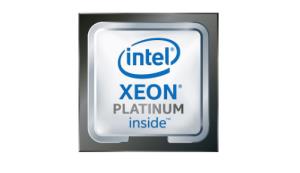Cart
- Cart Empty!
- ACER
- ALLIED TELESIS
- AMD
- ANTEC
- AOC
- APC/ MGE
- ASUSTEK COMPUTER
- ATI TECHNOLOGIES
- AVM
- AXIS COMMUNICATIONS
- BELKIN CORPORATION
- BENQ
- BROTHER
- CANON
- CASE LOGIC
- COREL
- D-LINK
- DATALOGIC
- DELL
- DIGITUS
- EATON CORPORATION
- EMERSON NETWORK POWER
- EPSON
- ERGOTRON
- FUJITSU TECHNOLOGY SOLUTIONS
- GIGABYTE TECH
- HEWLETT PACKARD
- INTEL
- IRIS
- KENSINGTON
- KINGSTON
- KODAK
- LENOVO
- LEXMARK
- LOGITECH
- MATROX
- McAfee
- MICROSOFT
- NETGEAR, INC.
- NEWSTAR
- NOKIA
- ORIGIN STORAGE
- PHILIPS
- PLANET
- PORT DESIGNS
- RAIDSONIC
- SAMSUNG
- SAPPHIRE INTERNATIONAL INC.
- SEAGATE & MAXTOR
- SIEMENS
- SONY
- SYMANTEC
- TARGUS
- TP-LINK TECHNOLOGIES
- V7 - VIDEO SEVEN
- WESTERN DIGITAL
- XEROX & VISIONEER
- ZYXEL
- More Brands
Every effort has been made to ensure the accuracy of all information contained herein. e-nitiative shall not be liable for any changes resulting in wrong product description, tax code and/or price. The shown information (specifications, prices, taxes) should be considered as an indication and can be changed at any moment and without any prior notice.
Company details
Laska Computers
Deltazijde 10b
1261ZM BLARICUM
The Netherlands
Email Us
info@laska.nl
Phone
035-5243553
VAT No
NL -001504242B88
KVK No
32052711




Product Details
Introduction
Intel® Optane™ Memory Supported
Intel® Optane™ memory is a revolutionary new class of non-volatile memory that sits in between system memory and storage to accelerate system performance and responsiveness. When combined with the Intel® Rapid Storage Technology Driver, it seamlessly manages multiple tiers of storage while presenting one virtual drive to the OS, ensuring that data frequently used resides on the fastest tier of storage. Intel® Optane™ memory requires specific hardware and software configuration.
Intel® Turbo Boost Technology
Intel® Turbo Boost Technology dynamically increases the processor's frequency as needed by taking advantage of thermal and power headroom to give you a burst of speed when you need it, and increased energy efficiency when you don’t.
Intel® Hyper-Threading Technology
Intel® Hyper-Threading Technology (Intel® HT Technology) delivers two processing threads per physical core. Highly threaded applications can get more work done in parallel, completing tasks sooner.
Intel® Virtualization Technology (VT-x)
Intel® Virtualization Technology (VT-x) allows one hardware platform to function as multiple “virtual” platforms. It offers improved manageability by limiting downtime and maintaining productivity by isolating computing activities into separate partitions.
Intel® Virtualization Technology for Directed I/O (VT-d)
Intel® Virtualization Technology for Directed I/O (VT-d) continues from the existing support for IA-32 (VT-x) and Itanium® processor (VT-i) virtualization adding new support for I/O-device virtualization. Intel VT-d can help end users improve security and reliability of the systems and also improve performance of I/O devices in virtualized environments.
Intel® VT-x with Extended Page Tables (EPT)
Intel® VT-x with Extended Page Tables (EPT), also known as Second Level Address Translation (SLAT), provides acceleration for memory intensive virtualized applications. Extended Page Tables in Intel® Virtualization Technology platforms reduces the memory and power overhead costs and increases battery life through hardware optimization of page table management.
Intel® 64
Intel® 64 architecture delivers 64-bit computing on server, workstation, desktop and mobile platforms when combined with supporting software.¹ Intel 64 architecture improves performance by allowing systems to address more than 4 GB of both virtual and physical memory.
Instruction Set
An instruction set refers to the basic set of commands and instructions that a microprocessor understands and can carry out. The value shown represents which Intel’s instruction set this processor is compatible with.
Instruction Set Extensions
Instruction Set Extensions are additional instructions which can increase performance when the same operations are performed on multiple data objects. These can include SSE (Streaming SIMD Extensions) and AVX (Advanced Vector Extensions).
# of AVX-512 FMA Units
Intel® Advanced Vector Extensions 512 (AVX-512), new instruction set extensions, delivering ultra-wide (512-bit) vector operations capabilities, with up to 2 FMAs (Fused Multiply Add instructions), to accelerate performance for your most demanding computational tasks.
Intel® Speed Shift Technology
Intel® Speed Shift Technology uses hardware-controlled P-states to deliver dramatically quicker responsiveness with single-threaded, transient (short duration) workloads, such as web browsing, by allowing the processor to more quickly select its best operating frequency and voltage for optimal performance and power efficiency.
Intel® Deep Learning Boost (Intel® DL Boost)
A new set of embedded processor technologies designed to accelerate AI deep learning use cases. It extends Intel AVX-512 with a new Vector Neural Network Instruction (VNNI) that significantly increases deep learning inference performance over previous generations.
Intel® Resource Director Technology (Intel® RDT)
Intel® RDT brings new levels of visibility and control over how shared resources such as last-level cache (LLC) and memory bandwidth are used by applications, virtual machines (VMs) and containers.
Intel® Volume Management Device (VMD)
Intel® Volume Management Device (VMD) provides a common, robust method of hot plug and LED management for NVMe-based solid state drives.
Processor
Processor manufacturer
Intel
Processor generation
3rd Generation Intel® Xeon® Scalable
Processor model
8358P
Processor base frequency
2.6 GHz
Processor family
Intel® Xeon® Platinum
Processor cores
32
Processor socket
FCLGA4189
Component for
Server/workstation
Processor lithography
10 nm
Processor threads
64
System bus rate
11.2 GT/s
Processor operating modes
64-bit
Processor boost frequency
3.4 GHz
Processor cache
48 MB
Thermal Design Power (TDP)
240 W
Box
N
Cooler included
N
Processor codename
Ice Lake
Processor ARK ID
212308
Memory
Maximum internal memory supported by processor
6144 GB
Memory types supported by processor
DDR4-SDRAM
Memory clock speeds supported by processor
3200 MHz
Memory channels
Octa-channel
ECC
Y
Graphics
On-board graphics card
N
Discrete graphics card
N
On-board graphics card model
Not available
Discrete graphics card model
Not available
Features
Execute Disable Bit
Y
Market segment
Server
Maximum number of PCI Express lanes
64
PCI Express slots version
4.0
Supported instruction sets
SSE4.2,AVX,AVX 2.0,AVX-512
Scalability
2S
Embedded options available
N
Harmonized System (HS) code
8542310001
Export Control Classification Number (ECCN)
5A992CN3
Commodity Classification Automated Tracking System (CCATS)
G178966
Processor special features
Intel® Hyper Threading Technology (Intel® HT Technology)
Y
Intel® Turbo Boost Technology
2.0
Intel® AES New Instructions (Intel® AES-NI)
Y
Intel Trusted Execution Technology
Y
Intel® Speed Shift Technology
Y
Intel® Transactional Synchronization Extensions
Y
Intel® Total Memory Encryption
Y
Intel® Crypto Acceleration
Y
Intel® Platform Firmware Resilience Support
Y
Maximum Enclave Size Support for Intel® SGX
8 GB
Intel VT-x with Extended Page Tables (EPT)
Y
Intel Software Guard Extensions (Intel SGX)
Y
Intel 64
Y
Intel Virtualization Technology (VT-x)
Y
Intel Virtualization Technology for Directed I/O (VT-d)
Y
Intel® Optane™ Memory Ready
Y
AVX-512 Fused Multiply-Add (FMA) units
2
Intel® Deep Learning Boost (Intel® DL Boost)
Y
Intel® Resource Director Technology (Intel® RDT)
Y
Intel® Volume Management Device (VMD)
Y
Intel® Run Sure Technology
Y
Mode-based Execute Control (MBE)
Y
Intel® Optane™ DC Persistent Memory Supported
Y
Operational conditions
Tcase
80 °C
Technical details
Launch date
Q2'21
Status
Launched
Supported memory types
DDR4-SDRAM
Memory speed (max)
3200 MHz
Number of UPI links
3
Weight & dimensions
Processor package size
77.5 x 56.5 mm
Other features
Maximum internal memory
6000 GB








